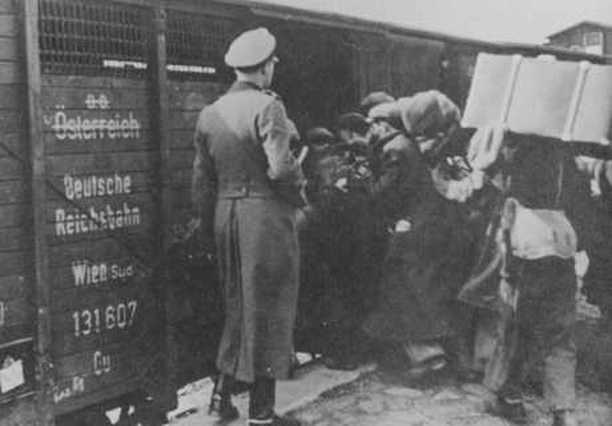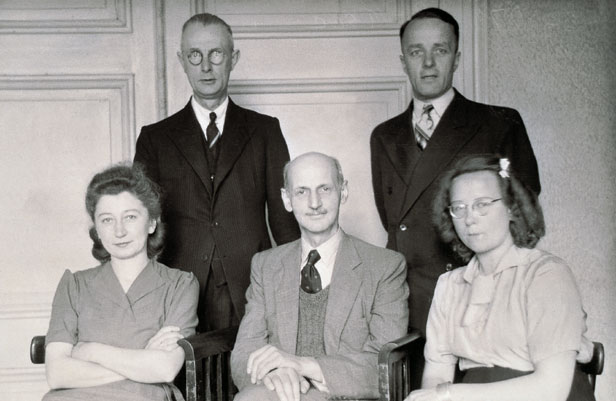CHI ERA ANNE FRANKAnnelies Marie Frank nasce il 12 giugno 1929 a Francoforte sul Meno, in Germania. Nel 1933, a seguito delle persecuzioni naziste, la sua famiglia emigra in Olanda.
“In maggio del 1940 i bei tempi finirono: prima la guerra, poi la capitolazione, l’invasione tedesca e l’inizio delle sofferenze di noi ebrei. le leggi antisemite si susseguivano all’infinito e la nostra libertà fu molto limitata” (Anne Frank, 20 giugno 1942 |
L' ALLOGGIO SEGRETOIl nascondiglio si trova in una sezione non utilizzata della ditta di Otto Frank. L’indirizzo è Prinsengracht 263.
“Così ci incamminammo sotto il diluvio, papà, mamma e io, ognuno con la sua cartella o borsa della spesa piena degli oggetti più svariati. Gli operai che andavano a lavorare di mattina presto ci guardavano pieni di compassione; dalle facce si capiva che erano dispiaciuti di non poterci offrire nessun mezzo di trasporto; l’appariscente stella gialla parlava da sé.” (Anne Frank, 9 luglio 1942) |
il diario di anne frankIl Diario di Anne Frank è stato pubblicato per la prima volta nel 1947, due anni dopo la morte di Anne avvenuta nel campo di concentramento di Bergen – Belsen.
“Spero di poterti confidare tutto, come non ho mai potuto fare con nessuno, e spero che mi sarai di grande sostegno” (Anne Frank, 12 giugno 1942) |
L'ARRESTOVenerdì 4 agosto la polizia tedesca fa irruzione nell’Alloggio Segreto, arrestando Anne Frank, la sua famiglia e gli altri clandestini.
“L’alloggio segreto col nostro gruppo di rifugiati mi sembra uno squarcio di cielo azzurro attorniato da nubi nere cariche di pioggia. L’area rotonda e circoscritta su cui stiamo è ancora sicura, ma le nubi si avvicinano sempre di più”. (Anne Frank, 8 novembre 1943) |
la deportazioneAnne Frank, la sua famiglia e gli altri clandestini vengono deportati prima nel campo di concentramento di Westebork e successivamente ad Auschwitz.
"Nella baracca S incontrai la famiglia Frank. Otto Frank venne da me con Anne e chiese se Anne non potesse aiutarmi - il servizio interno era molto ambito - Anne era molto gentile e disse: - "So fare tutto, sono pratica di tutto."(Rachel Van Amerongen - Frankfoorder, testimone) |
LE ULTIME SETTIMANE DI VITA DI ANNE FRANKNell’autunno del 1944 Anne Frank e Margot Frank, assieme ad altre prigioniere, vengono deportate nel campo di concentramento di Bergen-Belsen.
“Perché vogliono farci vivere come bestie?" (Anne Frank, Bergen-Belsen) |
IL DESTINO DEGLI ALTRI CLANDESTINIOtto Frank fu l’unico membro della sua famiglia a sopravvivere. Che cosa successe agli altri clandestini dal giorno dell’arresto?
|
APPROFONDIMENTI
Hai bisogno di ulteriori approfondimenti per una ricerca scolastica, per la tesi o per un tuo progetto?
Scrivici a [email protected]
Scrivici a [email protected]
Associazione di volontariato UN PONTE per ANNE FRANK numero 1548/3, costituita il 21/04/2015 presso l’Agenzia delle Entrate direzione provinciale di Livorno.
Codice fiscale: 92124870491
Codice fiscale: 92124870491







